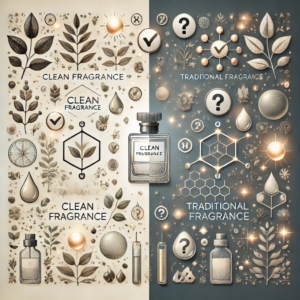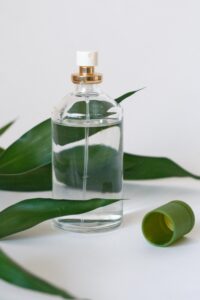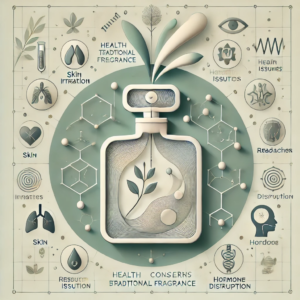
What Is a Clean Fragrance? A Quick Guide to Safer, Transparent Scents
If you’ve ever wondered what a “clean fragrance” really is, you’re not alone. As consumers become more ingredient-savvy, there’s growing demand for perfumes that are not only beautiful—but also safe and transparent. So what exactly makes a fragrance “clean”? Let’s break it down.
What Is a Clean Fragrance?
“Clean fragrance” refers to perfumes and scented products made without ingredients that may harm your health or the environment. Unlike traditional fragrances, clean options are crafted with non-toxic, hypoallergenic ingredients and emphasize transparency in labeling.
Although there’s no universal definition, standards from organizations like Credo Beauty, Sephora, and the Environmental Working Group (EWG) help set the bar for what “clean” means.
Clean Fragrance Certifications to Know
- Credo Clean Standard: Bans over 2,700 ingredients and promotes full fragrance transparency.
- Clean at Sephora: Prohibits phthalates, parabens, formaldehyde, mineral oils, and more.
- EWG Verified™: Guarantees no chemicals of concern and requires full ingredient labeling.
Health Concerns Behind Traditional Fragrance
Phthalates: Hormone Disruptors in Disguise
Used to make scents last longer, phthalates like DEP and DBP have been linked to hormone disruption, fertility issues, and developmental risks in children. Though still allowed in most perfumes, clean fragrance standards ban them completely.
Synthetic Musks: Persistent and Polluting
Compounds like galaxolide and tonalide build up in the human body and may disrupt hormones. They also pollute waterways and harm aquatic life. Clean fragrances usually avoid these entirely.
Fragrance Allergens: A Hidden Cause of Sensitivities
Ingredients such as linalool, limonene, and citral—common in both synthetic and natural fragrances—can cause allergic reactions or trigger asthma. Clean brands typically list known allergens and may formulate with reduced concentrations.
Respiratory Irritants & Indoor Air Quality
Some conventional perfumes release volatile organic compounds (VOCs) that can cause headaches, dizziness, or worsen breathing conditions. Clean fragrances are usually formulated with low-irritant ingredients that are gentler on the respiratory system.
Ingredient Transparency: No More Secrets
Most traditional brands hide scent formulas under “fragrance” or “parfum,” which can mask dozens of undisclosed chemicals. Clean fragrance brands push for full transparency:
- Listing all scent components (not just “fragrance”)
- Labeling known allergens
- Clarifying whether ingredients are natural, naturally derived, or synthetic
How to Choose a Clean Fragrance
- Look for labels like “EWG Verified,” “Clean at Sephora,” or “Credo Approved.”
- Read the ingredient list—avoid products that list only “fragrance.”
- Use trusted resources to research ingredient safety and allergen content.
Final Thoughts
Clean fragrances aren’t just a trend—they represent a smarter, safer way to enjoy scent. By choosing brands that are transparent and thoughtfully formulated, you support your health, the planet, and the future of conscious beauty.



